mobile Ansicht, to the English Version tap the flag


- Republik Moldau
- präsidiale Republik
- Eigenbezeichnung: Republica Moldova
- anderer Name: Bessarabien
• Flaggen
• historische Flaggen
• regionale Flaggen
• Bedeutung/Ursprung der Flagge
• Wappen
• historische Wappen
• Bedeutung/Ursprung des Wappens
• Flugzeugkokarde
• Landkarte
• Zahlen und Fakten
• Geschichte
• Ursprung des Landesnamens
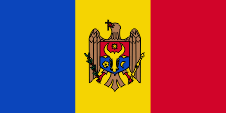
National-, Staats und Handelsflagge,
Seitenverhältnis = 1:2,
Quelle, nach:
Wikipedia (EN)





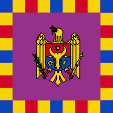
Flagge des Präsidenten,
Seitenverhältnis = 1:1,
Quelle, nach:
Wikipedia (EN)




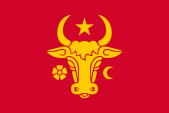
14.–15. Jhd.,
Flagge des Fürstentums Moldau,
Quelle, nach: Flags of the World,
Wikipedia (EN)




18./19. Jhd.,
Landesfarben des Fürstentums Moldau,
Quelle, nach: Flags of the World



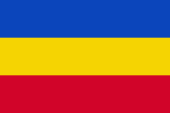
1917–1918,
Flagge der Moldauischen Demokratischen Republik,
Quelle, nach:
Wikipedia (EN)



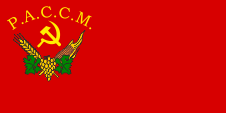
1925–1938,
Flagge der Moldauischen Autonomen Sozialistischen Sowjetrepublik,
Seitenverhältnis = 1:2,
Quelle, nach:
World Statesmen



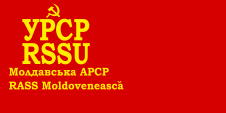
1938,
Flagge der Moldauischen Autonomen Sozialistischen Sowjetrepublik,
Seitenverhältnis = 1:2,
Quelle, nach:
World Statesmen




1938–1940,
Flagge der Moldauischen Autonomen Sozialistischen Sowjetrepublik,
Seitenverhältnis = 1:2,
Quelle, nach:
World Statesmen



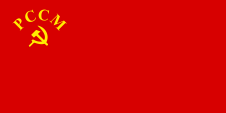
1940–1952,
Flagge der Moldauischen Sozialistischen Sowjetrepublik,
Seitenverhältnis = 1:2,
Quelle, nach:
World Statesmen



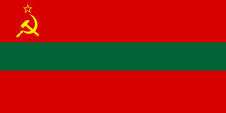
1952–1991,
Flagge der Moldauischen Sozialistischen Sowjetrepublik,
Seitenverhältnis = 1:2,
Quelle, nach:
World Statesmen




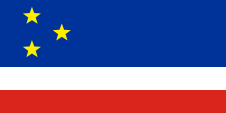
seit 1995,
Flagge der autonomen Republik Gagausien,
Seitenverhältnis = 1:2,
Quelle, nach:
Wikipedia (EN)
mehr Infos? hier klicken




seit 1991 (Sezession),
National- und Staatsflagge von Transnistrien,
Seitenverhältnis = 1:2,
Quelle, nach: Flags of the World
mehr Infos? hier klicken




Die heutige Flagge Moldawiens wurde am 06.11.1990 erstmals offiziell gehisst. Sie zeigt drei senkrechte Streifen in Blau, Gelb und Rot mit dem Staatswappen im gelben Mittelfeld. Eigentlich sind Blau und Rot die historischen moldauischen Nationalfarben, die auf das Fürstentum Moldau zurückgehen. Sie wurden vom historischen Wappen des Landes abgeleitet. Die Farben der Flagge sind seit 2010 per Gesetz niedergelegt. Sie werden folgendermaßen angegeben: Blau = Pantone 293, Gelb = Pantone 109, Rot = Pantone 186. Die auffällige Ähnlichkeit der heutige Flagge Moldawiens mit der Flagge Rumäniens ist beabsichtigt. Die Moldawier sind Rumänen und sprechen einen rumänischen Dialekt.
Quelle:
Wikipedia (EN),
Flags of the World,
Volker Preuß


Wappen von Moldawien,
Quelle, nach: Wikipedia (EN)


1878,
Wappenschild des russischen Gouvernements Bessarabien,
Quelle, nach:
Wikipedia (EN)

1917–1918,
Wappen der Moldauischen Demokratischen Republik,
Quelle, nach:
Wikipedia (EN)

1927–1938,
Wappen der Moldauischen Autonomen Sozialistischen Sowjetrepublik,
Quelle: Wikipedia (EN), not credited,
Public domain, via Wikimedia Commons
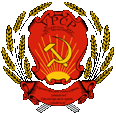
1938–1940,
Wappen der Moldauischen Autonomen Sozialistischen Sowjetrepublik,
Quelle: Wikipedia (EN), not credited,
Public domain, via Wikimedia Commons
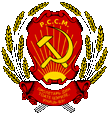
1940–1941,
Wappen der Moldauischen Sozialistischen Sowjetrepublik,
Quelle: Wikipedia (EN), : Pianistmodifications: TilmannR,
Public domain, via Wikimedia Commons
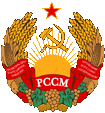
1941–1990,
Wappen der Moldauischen Sozialistischen Sowjetrepublik,
Quelle: Wikipedia (EN), : Fry1989, Jam123modifications: TilmannR,
Public domain, via Wikimedia Commons

Das am 13.07.1990 eingeführte Wappen zeigt einen Adler mit einem goldenem Kreuz im Schnabel. In seinen Krallen hält er ein goldenes Zepter und einen Ölzweig. Der Brustschild ist oben rot mit einem goldenem Stern und unten blau mit einer Rose und einem Halbmond. In der Mitte ein goldener Auerochsenkopf. Vorbild des Wappens ist der rumänische Adler.
Quelle:
Wikipedia (EN), Volker Preuß


Flugzeugkokarde,
Quelle, nach: Wikipedia (EN)

Lage:
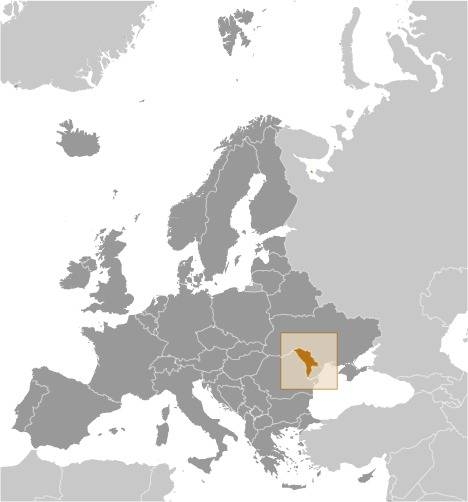
Quelle: CIA World Factbook
Landkarte des Landes:
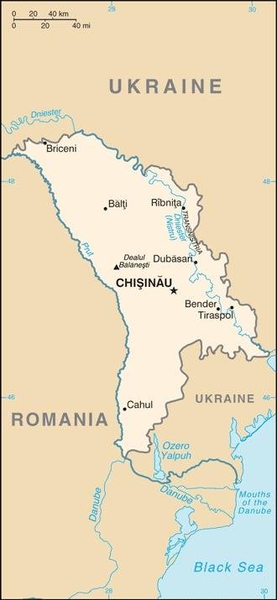
Quelle: CIA World Factbook

Fläche: 33.843 km²
Einwohner: 2.600.000 Ew. (2020), davon 82% Moldauer (Rumänen), 6% Ukrainer, 4% Russen, 4% Gagausen, 2% Bulgaren, und ferner 900 Deutsche
Religionen: 90% Othodoxe Christen, 1% Katholiken
Bevölkerungsdichte: 77 Ew./km²
Hauptstadt: Kischinau (rum.: Chisinău, russ.: Kischinjow), 532.513 Ew. (2014)
Amtssprache: moldauisches Rumänisch
sonstige Sprachen: Russisch, Ukrainisch, Gagausisch
Währung: 1 Moldau-Lei (MDL) = 100 Bani
Zeitzone: MEZ + 1 h
Quelle:
Wikipedia (D)

1061–1240 · das Gebiet ist Teil des Reiches der Kumanen
1359 · Gründung des rumänischen Fürstentums Moldau zwischen den Karpaten und dem Dnjestr
1387 · Abhängigkeit von Polen-Litauen
1455 · das Fürstentum Moldau wird dem Osmanischen Reich tributpflichtig
1511 · Moldau wird vom Osmanischen Reich unter beschränkter innerer Autonomie annektiert
1775 · Abtretung des Buchenlandes (Bukowina) an Österreich
1806–1812 · russisch-türkischer Krieg
1812 · Frieden von Bukarest, der östliche Teil des rumänischen Fürstentums Moldau (zwischen den Flüssen Prut und Dnjestr) kommt unter dem Namen Bessarabien an Russland
1853–1856 · Krimkrieg, vorübergehende Besetzung durch österreichische Truppen, Bessarabien verbleibt bei Russland
1861 · das rumänische Restgebiet des das Fürstentums Moldau (zwischen den Karpaten und dem Fluss Prut) vereinigt sich mit der Walachei zum Fürstentum Rumänien
1914–1918 · Erster Weltkrieg, Rumänien beteiligt sich ab 1916 an der Seite der Entente im Krieg
1917 · bolschewistische Revolution in Russland, Bürgerkrieg, Proklamation der Moldauischen Demokratischen Republik
09.04.1918 · Annexion von Bessarabien durch das Königreich Rumänien
1919/1920 · Frieden von Saint-Germain und Frieden von Trianon, Rumänien erhält offiziell Bessarabien, das östliche Banat, die Bukowina und Siebenbürgen
1924 · Gründung der Moldauischen Autonomen Sozialistischen Sowjetrepublik (Transnistrien) auf dem Gebiet der Sowjet-Ukraine
1939–1945 · Zweiter Weltkrieg: 1940 die Sowjetunion zwingt Rumänien zur Abtretung von Bessarabien, der Südteil des Landes wird abgetrennt und der Sowjet-Ukraine angeschlossen, der Nordteil wird an die Moldauische Autonome Sozialistische Sowjetrepublik angeschlossen und die Moldauische Sozialistische Sowjetrepublik proklamiert, 1941 Rumänien kann Bessarabien wieder besetzen und annektiert das Gebiet bis zum Südlichen Bug, 1944 Bessarabien wird von sowjetischen Truppen besetzt
1947 · Friedensvertrag von Paris, Rumänien erkennt die sowjetische Annexion und den Bestand der Moldauischen Sozialistischen Sowjetrepublik an
1989 · Unruhen
1990 · Proklamation der Republik Gagausien, Bürgerkrieg
27.08.1991 · Proklamation der Unabhängigkeit der Republik Moldawien (Moldova) von der Sowjetunion, Bürgerkrieg, Abspaltung der Dnjestr-Republik (Transnistrien)
1994 · bei einer Volksabstimmung wird die Vereinigung mit Rumänien abgelehnt, Gagausien wird als Republik innerhalb Moldawiens anerkannt
Quelle:
Atlas zur Geschichte,
Wikipedia (D),
World Statesmen

Der Name Moldawien (Moldau, Moldova) leitet sich vom Namen des im heutigen Nordost-Rumänien gelegenen Flusses Moldau (Moldova) ab. Er war der Namenspatron für das historische Fürstentum Moldau. Der Name Bessarabien hat mit Arabien nichts zu tun. Er geht auf die Familiendynastie der Bessarab zurück.
Quelle:
Volker Preuß


![]()

























